Hello there. One more street is waiting for you. This time, the west direction from the square Rynok. Let's go.
We get on the tram #1 in Ruska street (direction - Railway station). And get off on Kropyvnytskyi Square. In front of you there is a magnificent building of St. Elisabeth and Olha Church. The locals call it simply Elzbieta. It was built at the beginning of XXth century in neogothic style in memory of Empress Elisabeth of Austria (Sisi), a wife of Franz Josef the Emperor of Austro-Hungarian Empire, who tragically died. This church is the tallest in the city - almost 80 meters high. Above the rosette you can see a sculpted composition Crucifixion with Bystanders (the crucified Christ, the Mother of God, and John the Baptist) made by the famous Lviv sculptor Petro Viytovoch. If you go inside, you`ll be very surprised by the contrast between the interior and exterior, because the interior was totally destroyed in the Soviet period.
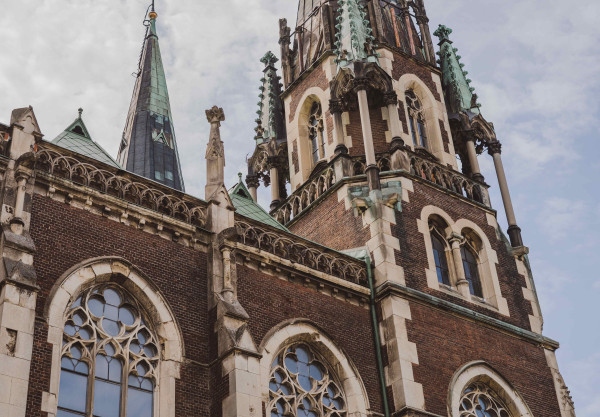
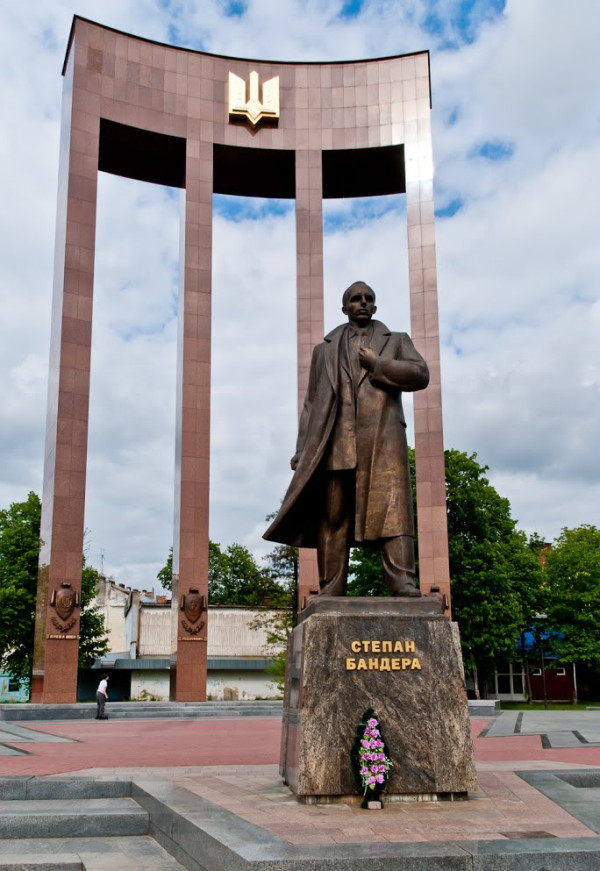
Beside the church, the seven-meter monument of Stepan Bandera (the leader of the Organization of Ukrainian Nationalists) stands on the square. It was made by sculptor Mykola Posikira and opened in 2007. Behind the monument there is a Stele of Ukrainian Statehood, an arch with four columns each of them symbolizing a certain period of Ukrainian statehood: the Kyivan Rus, the Cossack period, the Ukrainian People Republic period, and the fourth column - the modern period.
Opposite the monument, on the other side of the street, at number 91, a red brick building catches your eye. This is a school built in the late 19th century. And we cross the road.
In general, Bandery is a student street because most of the buildings of Lviv Polytechnic are located here. So we recommend you to feel like a student for a while (if you`re not) and dive into the vibe of this place 😀You won't find fancy restaurants here, but you`ll find about 10 places where delicious kebab is served.
Learn more:

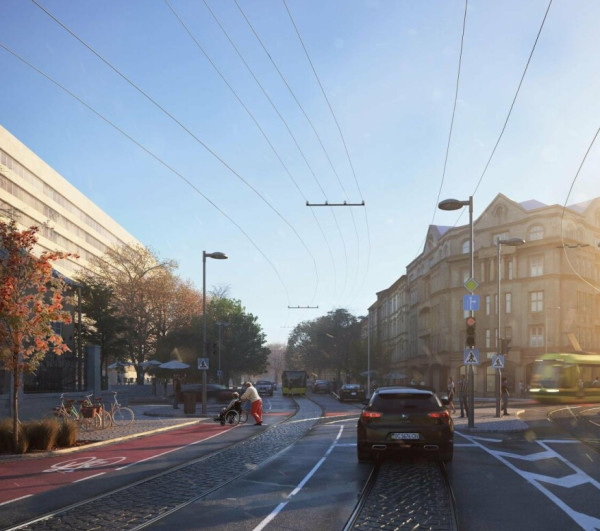
When the street was being built up, secession was the dominant style in architecture. Pay attention to the building #61. This is a remarkable example of Secession style with its characteristic floral ornaments and mascarons.
Can you already smell the fresh baked goods in the air? And most likely see a big line to the next building. It's bakery Takk, which is very popular among students. Don`t hesitate to get in the line, because half of the route is still ahead of us. So it will be good to have a snack.
The building, in a quite modern style at Bandery 28a, is an Academic building of Lviv Polytechnic. It was built in 1966-72 in the modernist style.
The house at Bandery 24 looks very interesting. It is called the house-ship or the house-iron because of its shape. It was built in 1910 in the rational Secession style. By the way, it had one of the first electric elevators in Lviv. Now there is a post office there. So why not buy a postcard and send it to your friends, family or even yourself.
One more interesting example of Secession style is at Bandery 16 with nicely restored balconies.
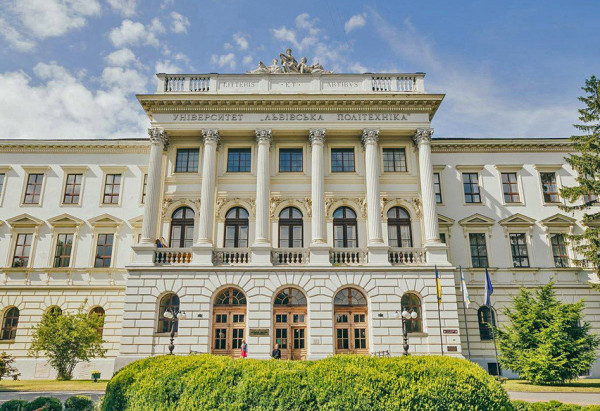
The main building of Lviv National Polytechnic can be easily called the most magnificent building of the Bandera St. It was built at the end of the 19th century in the style of historicism with elements of neoclassicism and neo renaissance. The architect, Julian Zachariewicz wanted it to look as good as Vienna Polytechnic, where he studied. You can enter the yard, to have a better look at the facade. The building is decorated with a sculpture composition that shows Engineering, Architecture and Mechanics and above it the Latin inscription “Litteris et artibus”. We recommend you to walk here. Not every university has such beautiful territory.
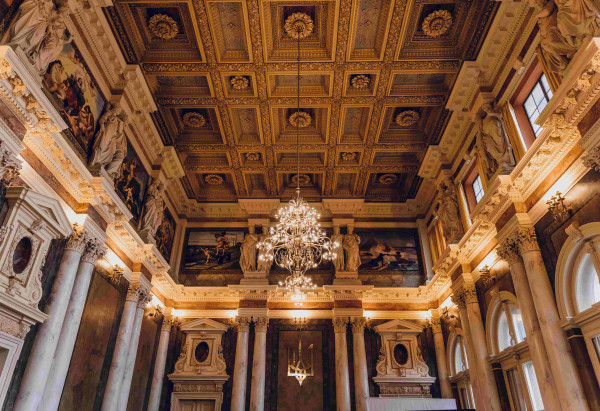
We cross the road again. On the right there is one more red brick school that was built with elements of neo-gothic and neo-romanesque styles. It could be a perfect set for filming Harry Potter movies, for example.
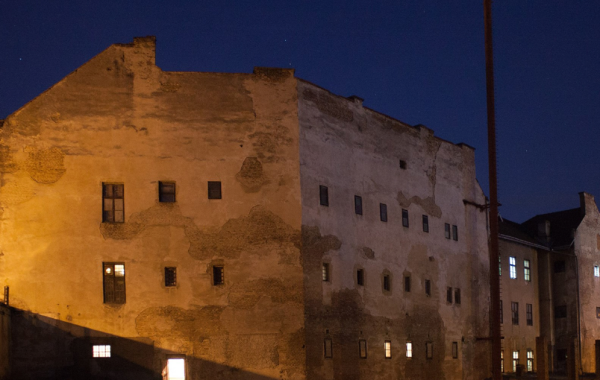
Banderу street ends (but not our route) with a building that was built as barracks for the Austrian gendarmerie. Later, it became a main department of Polish police and at that time the prison was built beside it. By the way, Bandera, Stetsko, Lebed, and others were held in this prison during the Lviv Trials of 1936. When the Soviet government came to power in 1939, it turned this building into Lviv Prison No. 1, which was immediately filled with political prisoners. The worst was in June 1941, when the NKVD shot about a thousand prisoners, many of whom were so disfigured that they could not be identified. In Soviet times, Chornovil, the Horyn brothers, and other dissidents were interrogated here. Now, part of the building houses the Museum of Victims of Occupation Regimes "Prison on Lontskoho Street" (as it was called by residents, after the street's name).
The entrance to the museum from Iryna Kalynets street. And it works from Tuesday to Friday and on Sunday, from 10 a.m. till 7 p.m.
We cross the road again and go up. On the right there is a Monument to the Victims of the communist regime, unveiled in 1997. And a bit further up at the corner of Bandery and Doroshenka stands the former church of St. Mary Magdalene, whose baroque towers are very recognizable. Since 1988 the House of Organ and Chamber music has been organized here.
The building has a famous Rosen`s fresco “The Baptism of Jesus in the Waters of the Jordan River.” By the way, in Soviet times it was painted over, and the baptistery where it was located was turned into a toilet. It was recently restored, so don't miss the opportunity to admire this masterpiece.
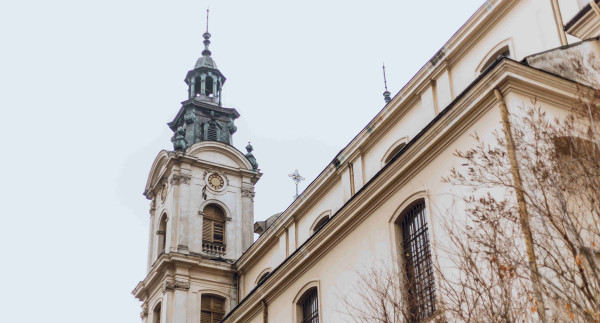
The House of Organ music is a modern space that's open to everyone. Concerts are held here almost every day, so we recommend you to visit one. It's an unforgettable experience.
Our route is over, so it's time to enjoy a kebab and plan the next route. See you soon!



